September 18, 2016, Sunday — The Face of Christ and Unity
“Seeking the Face of Jesus must be the longing of all of us Christians… If we persevere in our quest for the Face of the Lord, at the end of our earthly pilgrimage, he, Jesus, will be our eternal joy, our reward and glory for ever.”
—Emeritus Pope Benedict XVI, during his visit to Manoppello, Italy, on September 1, 2006, to pray before the image preserved there of the face of Christ. The image is mysterious because there appears to be no paint whatsoever on the fabric, leaving the cause of the face that appears on the cloth as yet unexplained“The Shroud of Turin has been well known and honored for a long time throughout the world; however, the holy face of Manoppello seems for some still to be something unheard of and new, not supported in the same way from the perception and tradition of the faith of the people of God. But it is not so in reality… Between these two incomparable witnesses, there is not only no contradiction, but also they have even been proven for a long time to concur and correspond perfectly to one another. The Trappist sister Blandine Paschalis Schlömer has compellingly pointed out a variety of concurring points that show the extreme compatibility between the face on the Sindone (or Shroud) and the face on the Sudarium (the Holy Face of Manoppello). It indicates that there is a relationship between both cloths, which were established in the holy tomb in Jerusalem. In any case, the Shroud of Turin and the Manoppello Image show the inexplicable and mysterious way the same person was once dead and then alive. It is Jesus Christ, the Lord.”
—Archbishop Bruno Forte, the theologian-bishop who heads the diocese of Chieti-Vasto in Italy’s Abbruzzi region, where Manoppello is located, in an August 6 interview with Paul Badde of CNA (link)“Hagios, Hagios, Hagios!”
—the words “Holy, Holy, Holy” in Greek (in Latin the words are, “Sanctus, Sanctus, Sanctus”), spoken this morning in Manoppello, Italy, in the Shrine of the Holy Face, by Greek Orthodox bishops who, along with Orthodox bishops from many other countries, including Russia, were celebrating their Sunday Divine Liturgy according to the Orthodox rite of St. John Chrysostom. This was the first time an Orthodox liturgy has ever been celebrated in the Shrine of the Holy Face. The Holy Shrine of Manoppello is thus becoming an unexpected “point of encounter” between Catholics and Orthodox as they seek reunion after nearly 1,000 years of schism. The Holy Face was clearly visible during the liturgy in its reliquary high above the shrine’s main altar…
(Above, the Manoppello cloth. The cloth, made of a very fine silk, bears the image of a man. The image is unsigned and undated. There is no evidence of paint on the image, so it is believed that it is not a painting. No theory has ever been developed to explain how the image was made. It remains a mystery. The material of the cloth is byssus, used in the Eastern Mediterranean in ancient times for the robes of the Egyptian Pharaohs and of the High Priests in Jerusalem. Note the bruises on the forehead, on the inside of the right eye at the top of the nose, and on both sides of the nose. The image has been preserved in Manoppello, a tiny town on the other side of Italy from Rome, since the early 1600s — 400 years. Some believe it was the image kept prior to 1500 in St. Peter’s Basilica and called the Veil of Veronica. The thesis that it was the veil placed over the face of Jesus in his tomb in Jerusalem is being promoted by the custodians of the image, the Capuchin Friars of Manoppello. Sister Blandine Paschalis Schlömer, a German nun who has lived in Manoppello for many years, has done a comparison study of this image with the image of the face on the Shroud of Turin and says the features of the two faces are able to be perfectly superimposed one upon the other)
The Shrine of the Holy Face of Manoppello this Sunday morning was filled with bishops — Orthodox bishops — two dozen of them, chanting the Orthodox liturgy by turns in Greek, Russian, Romanian, Italian, English, and five other languages.
It was the first Orthodox liturgy ever celebrated at the Shrine of the Holy Face, making it an historic moment in the dialogue between the Roman Catholic Church and the 14 Orthodox Churches (Greek, Serbian, Bulgarian, Russian, etc.)
About two dozen Catholic bishops were also present, including Archbishop Bruno Forte, the well-known theologian who is the head of the archdiocese of Chieti, about 10 miles from Manoppello, and Bishop Brian Farrell, Secretary of the Council for the Promotion of Christian Unity. But these Catholic bishops were not present as celebrants of the liturgy, only as onlookers and guests.
Also present were two cardinals from the Roman Curia, Cardinal Kurt Koch of the Council for the Promotion of Christian Unity, and Cardinal Leonardo Sandri, Prefect of the Congregation for the Eastern Churches.
The Orthodox and Catholics bishops were all theologians participating in the official Orthodox-Catholic theological dialogue, more than 30 years old now, meeting this year for a week in Chieti to discuss the delicate issue of papal primacy and synodality as a form of Church governance.
Also present at the liturgy, which lasted for about two hours, were some 150 lay Catholics from the town of Manoppello, as well a group of lay Orthodox who live in Italy, and who actively participated in the responses to the prayers.
The Orthodox liturgy composed St. John Chrysostom in the 400s is the same Divine Liturgy that the Eastern Rite Catholic Churches celebrate. This shows that there is no doctrinal impediment for Catholics to celebrate Mass according the the Eastern Rite.
When time came for Communion, the celebrant, a Greek Orthodox bishop, told those present that, due to the present lack of unity between the Catholic and Orthodox Churches, only Orthodox believers could receive Communion. So those Catholics in the church — who were in the majority — stayed in their pews.
I felt that this showed clearly how close we are — we all prayed together throughout the liturgy, which we followed in a multi-language booklet — but how far apart we remain — we could not share in Communion.
An Orthodox parish priest who serves a small number of Orthodox in a church in Chieti, at the end of the liturgy, spoke for several minutes about his own hopes for closer Church unity in the years ahead.
Seemingly choking with tears, he asked the theologians present, who are continuing their theological dialogue this week in Chieti, to “hurry up” and resolve all outstanding theological questions dividing the Churches, in order to allow full reunion to come in the near future, and not in centuries, or millennia, or… never. It was an unexpected, powerful appeal.
After the Mass, Sister Blandine came up to me for a moment.
“Today was the answer to your prayer,” she said to me, smiling knowingly.
I didn’t understand.
“What prayer?” I asked.
“The one you prayed here, in front of the Holy Face,” she said, indicating the Holy Face above the altar. “You don’t remember?”
I shook my head.
“It was the day you came to Manoppello with Father Pfeiffer, in 2003 I think it was, 13 years ago,” she said. “We stood together by the Holy Face, you and I and Father Pfeiffer, and we each prayed for a special intention. And your prayer was that Christ would help the effort to bring about Christian unity between the Catholics and the Orthodox. I heard you pray it, and I have never forgotten it. And today it came true.”
“Ah,” I said, still not remembering. “I appreciate you reminding me of that.”
Was this liturgy in the Shrine of the Holy Face a step forward in the long road toward the reunion of the Orthodox and the Catholics?
Sister Blandine seems to think it was. So do I.
But there remains much to do…
I was in Manoppello today because our Foundation, the Urbi et Orbi Foundation, works quietly to “build bridges” of friendship between Catholics and Orthodox. The Foundation will have an Advent Retreat-Pilgrimage in Rome in early December and we will travel to Manoppello during the retreat to venerate this holy image. If you would like to participate in this pilgrimage, please email us.
Manoppello and Pope Benedict XVI
After Pope Benedict visited Manoppello in September of 2006, the talk of “the human face of God” in Christ became one of the “marks” of Benedict’s pontificate.
A few weeks ago, in commemoration of the 10th anniversary of the event, German author Paul Badde, who has written a book on the Holy Face, asked Archbishop Bruno Forte of Chieti-Vasto about his memories of the day. The interview was published On August 6 by CNA. Here are excerpts.
Paul Badde: Your Grace, 10 years ago, Pope Benedict XVI visited the holy veil, which is called the “Volto Santo” in Manoppello and was long known as the “Veil of Veronica,” on your invitation as the first Pope in more than 400 years to visit. You stood one meter away from the Holy Father on this historic encounter. What was going through your mind during those moments?
Archbishop Bruno Forte: In those moments, my eyes were going back and forth between the venerated image and the face of the Successor of Peter, who contemplated it intensely, as if to be captured by the image and at the same time challenged to enter into that which this veil suggests – with that extraordinary mystical and inquiring intelligence that characterized the whole work of Joseph Ratzinger and Benedict XVI. It was like attending a dialogue in which silence was more eloquent than each word: a silence from the surplus, touching and being touched on the threshold of mystery from whose depths allows itself to be illuminated.
Badde: “The Pope was delighted!” as you said in German right after the Pope’s visit. Can you remember more today the immediate reaction of Benedict XVI to this “face-to-face” encounter?
Archbishop Forte: Of course. The enthusiasm of the Pope seemed to me to be like what the Greek term “enthousiasmós” means in the original sense of the word: “en theó ousía” – as an “act of being in God.”
Badde: You said in 2006 that there is a “moral certitude” that the image of Manoppello is identical with that which the Evangelist John mentioned as “soudarion” from Christ’s empty tomb in Jerusalem. What did you mean?
Archbishop Forte: John names it in verses 6 and 7 in the 20th chapter of his Gospel: “When Simon Peter arrived after him, he went into the tomb and saw the burial cloths there, and the cloth that had covered his head, not with the burial cloths, but rolled up in a separate place.” The burial cloths – in the original “tá othónia” – correspond in all likelihood with that unique witness that we have in the famous Shroud of Turin (or Santa Sindone in Italian). The “Soudárion,” on the other hand, allows me to say from my moral certainty that it corresponds with the veil from Manoppello. This certainty is supported by various data. First and foremost, the veil was kept in Jerusalem as a precious remembrance of the Redeemer. Then it was taken to Camulia in Cappadocia where it was venerated for a long time. From there it was later taken under the threat of the so-called iconoclasts first to Constantinople and then in safety to Rome. Here it was displayed at the beginning of the 13th century for the public to view, where it was treasured as an incomparable relic at St. Peter’s Basilica. When the new construction of the magnificent and current St. Peter’s began on April 18, 1506, the sacred Sudarium was still located in a vault, from where the veil in all likelihood was brought to safety by Cardinal Giampietro Carafa, Archbishop of Chieti and later governor of the city (and future Pope Paul IV) in 1527 as German and Spanish soldiers ravaged Rome in the so-called “Sack of Rome.” And which place was safer than a monastery on the other side of the Papal States’ borders – in his Diocese of Chieti-Vasto? Manoppello was the first town behind the border, which is reached as soon as one comes out of Rome and therefore the holy veil arrived here at a Capuchin monastery after it was previously kept in sure hands in private homes. But when it was decided in 1640 to put the veil on display for public veneration, the threat that the Vatican’s Chapter of Canons could demand to get the veil back was foiled and thwarted by a certain Fra’ Donato da Bomba with a chronicle in which he asserted that the holy veil had already reached Manoppello in 1506, when the new construction on St. Peter’s began. Therefore, it could not be possible to be the so-called Veil of Veronica as it was back then also called in Rome. It was thus a pious lie, but nevertheless a lie, even if it was pronounced with good intentions, which saved the whereabouts of this genuine divine proof of the passion and resurrection of Christ for the people of Abruzzi and for all of us…
Badde: And how do you answer the voices that claim the portrait of Christ on the veil of Manoppello is simply “painted” and indeed from a human hand, probably during the time of the Renaissance?
Archbishop Forte: The Veil of Manoppello was tested under an electron microscope and even in extra enlargements, no traces of paint were found. The image was not painted; rather, it is a true image — and that makes it even more precious because it provides us with a kind of authentic image which we have of the Redeemer of the world…
Badde: What will you tell Pope Francis about the concrete “Misericordiae Vultus” (Face of Mercy) in Manoppello, if the opportunity should ever arise?
Archbishop Forte: I have already spoken enthusiastically with his Holiness about the Holy Face of Manoppello and also sent him a beautiful reproduction. For that reason, I leave it all now in his hands and in the hands of God…
Note: The Moynihan Letters go to some 20,000 people around the world. If you would like to subscribe, click here to sign up for free. Also, if you would like to subscribe to our print magazine, Inside the Vatican, please do so! It would support the old technology of print and paper, as well as this newsflash. Click here.
What is the glory of God?
“The glory of God is man alive; but the life of man is the vision of God.” —St. Irenaeus of Lyons, in the territory of France, in his great work Against All Heresies, written c. 180 A.D.


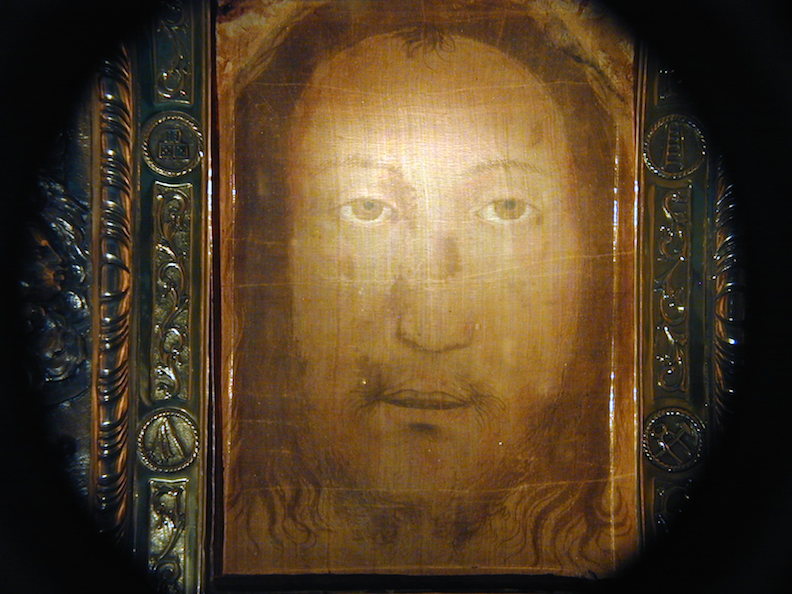
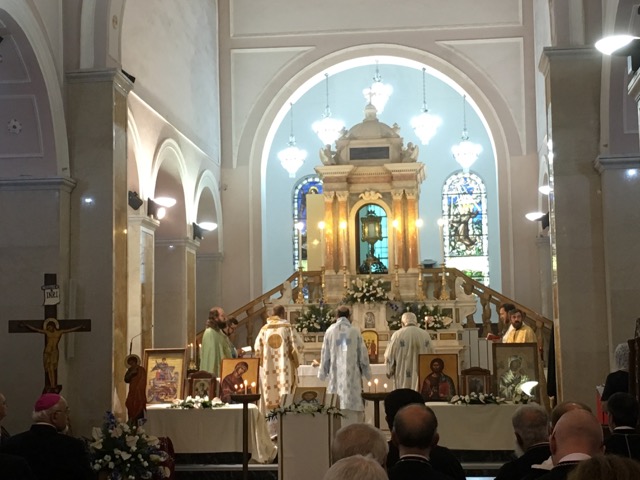
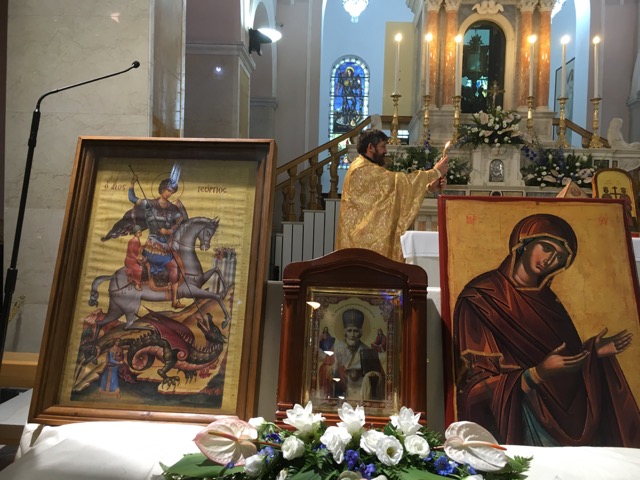
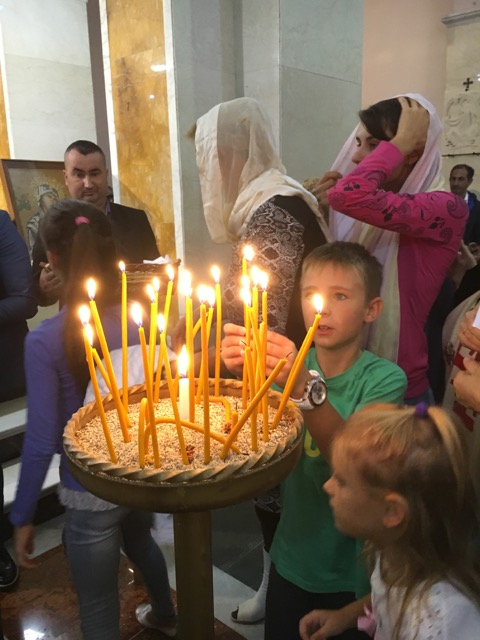
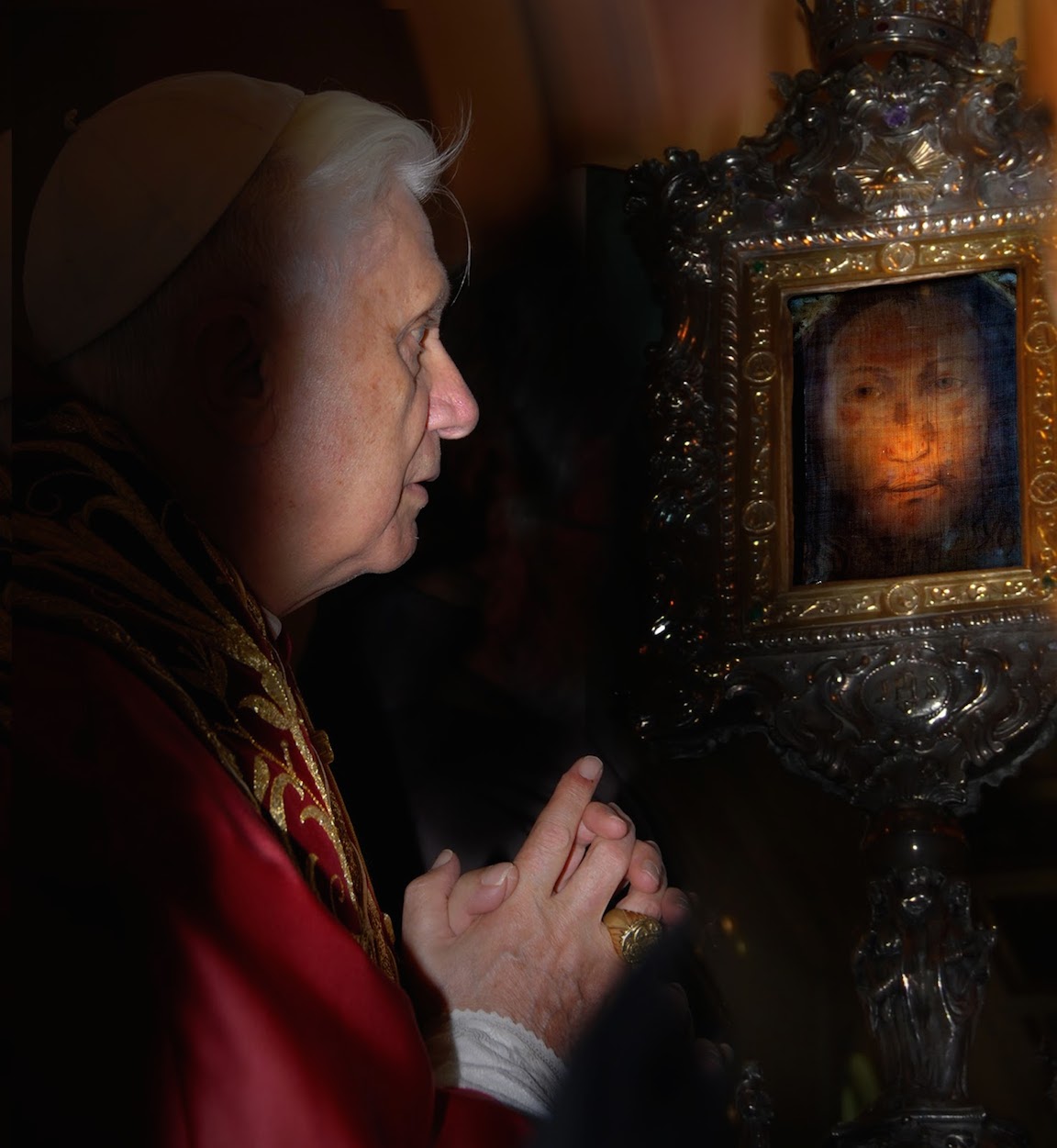
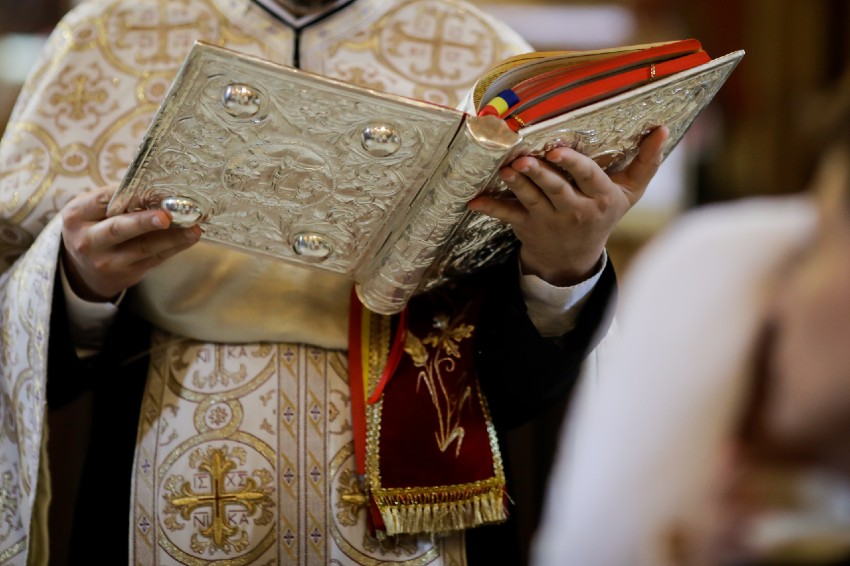
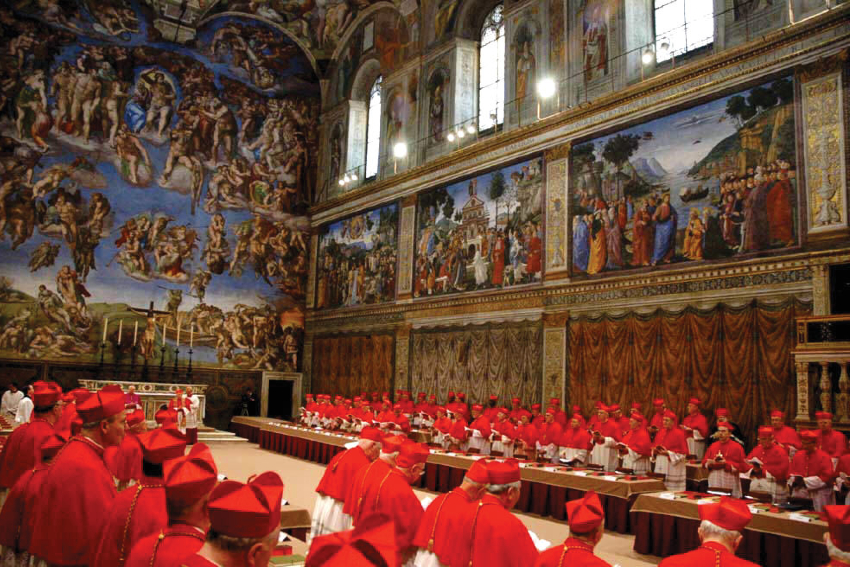



Facebook Comments